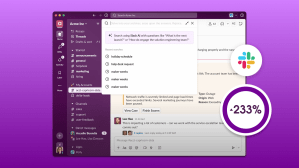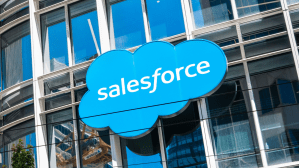This year’s holiday shopping season could be especially challenging for retailers as they compete for shoppers with less purchasing power than in past years. With the fewest number of days between Thanksgiving and Christmas since 2019 and 43% of consumers carrying more debt than they were in 2023, retailers should prepare for an uphill battle in terms of shopper conversion.
How retailers can respond: New Salesforce data from the Salesforce Shopping Index indicates that shoppers are particularly price-conscious right now. Two-thirds of global shoppers report that prices will dictate where they choose to shop in 2024 (up from 46% of shoppers in 2020), with less than one-third prioritizing the quality of the goods.
- As consumers hunt for the best deals, retailers can use strong and strategic discounts to appeal to and convert shoppers.
- Retailers can also use AI to augment employees, increase operational efficiency, build deeper customer relationships, and drive higher margins.
- For example, AI-powered personalization, such as product recommendations and tailored promotions, will help retailers be ready with the right — and best priced — offer when the customer is looking to purchase.
The Salesforce perspective: “This season will be competitive, intense, and no doubt focused on pricing and discounting strategies. It’s never been more important to leverage technology like AI and rely on your customer data for guidance and insight into marketing campaigns – especially the holiday promotional calendar – that keep your loyal customers buying more and buying from you.” – Caila Schwartz, Director of Strategy and Consumer Insights
It’s never been more important to leverage technology like AI and rely on your customer data for guidance and insight into marketing campaigns — especially the holiday promotional calendar – that keep your loyal customers buying more and buying from you.
Caila Schwartz, Director of Strategy and Consumer Insights
Why it’s relevant: The Salesforce Shopping Index analyzes global data from more than 1.5 billion global consumers on retail sites using Salesforce products (including 29 of the top 30 U.S. online retailers) to forecast holiday spending.
Forecasts on the 2024 holiday shopping season (Nov. 1-Dec. 31):
Modest sales growth set to continue:
- With 47% of shoppers saying they are buying the same amount as last year, and 40% buying less, holiday sales growth is expected to be softer than in 2023, which increased 3% year-over-year (YoY) and totaled $1.17 trillion.
- Salesforce predicts a YoY global sales growth of 2% for November and December, totaling $1.19 trillion and a 2% YoY increase in sales growth in the United States, reaching $277 billion in sales.
Chinese shopping apps add to competitive shopping landscape for retailers:
- Salesforce predicts that one in five (21%) purchases this holiday season will be made on Chinese shopping apps such as Temu, Shein, AliExpress, and TikTok.
- This prediction mirrors these apps’ recent growth: more than one-third (35%) of shoppers report that they’re buying more on the apps in the past three months compared to the same time period in 2023.
- The application to watch most closely this holiday may be TikTok.
- Since the last survey in April 2024, there’s been a 24% increase in the number of shoppers who report making a purchase through the app.
Discounts drive shopper demand:
- Two-thirds of shoppers say they’re holding out on making big purchases until Cyber Week, largely because they believe this to be the best week of the season for deals and promotions.
- Salesforce is predicting global discount rates will rise briefly in October and peak at an average discount of 28% during Cyber Week. In the U.S., the average discount rate is expected to reach up to 30%.
- One data point in this prediction: During the 2024 Prime Day event, retailers that meaningfully increased discount rates saw a 3% increase in U.S. sales and positive order volume growth for the first time in years. This indicates that there is pent-up consumer demand to buy, and discounts will be key to unlocking that demand.
Shoppers and retailers alike embrace AI for more personalized experiences:
- Salesforce expects 18% of global orders during the 2024 holiday season to be influenced by a combination of predictive and generative AI. This amounts to $201 billion in global online sales.
- Over half (53%) of shoppers surveyed by Salesforce report interest in using generative AI for inspiring the perfect present. Other reported benefits of the technology include price comparisons and holiday budgeting.
- Retailers are also using AI to improve experiences in stores, online, and during customer service interactions.
- Quick resolution times and rapid responses are the top two features that matter most to shoppers when interacting with customer service, paving the way for AI chatbots to improve CSAT scores.
- AI-embedded site search will drive a nearly 3x better conversion rate compared to online shoppers who don’t engage with site search.
BOPIS offers retailers and consumers both speed and economy:
- Retailers trying to keep prices low will need to find cheaper ways to get products to shoppers quickly.
- Buy Online Pick Up In Store (BOPIS) will be a popular retail strategy to meet this need, and is expected to drive 33% of global online orders the week before Christmas and Boxing Week due to the shortened shopping season.
Customer perspective: “This holiday, we’re not just focused on meeting customer expectations, we’re anticipating them so we can ensure that every shopper’s journey with us is as smooth and efficient as their travels. It’s all about leveraging AI to personalize experience for consumers, giving them the perfect product at the best value, at the right moment.” – David Oksman, Vice President Marketing & Direct to Consumer, Samsonite
Go deeper:
- Visit the Holiday Insights Hub for more shopping predictions and analysis
- Get ready for the holiday season with the 2024 Holiday Planning Guide
- See how Salesforce helps retailers scale omnichannel commerce
2024 Salesforce holiday insights and predictions methodology
Powered by Commerce Cloud, Marketing Cloud, and Service Cloud, Salesforce analyzes aggregated data to produce holiday insights from the activity of more than 1.5 billion global shoppers across more than 64 countries, with a focus on 12 key markets: the U.S., Canada, U.K., Germany, France, Italy, Spain, Japan, the Netherlands, Australia/New Zealand, the Asia-Pacific region (excluding Japan, Australia, and New Zealand), and the Nordics. This battery of benchmarks provides a deep look into the last nine quarters and the current state of digital commerce. Several factors are applied to extrapolate macroeconomic figures for the broader retail industry.
The prediction data that we present are from proprietary Salesforce research. The calculations we use blend first-party and third-party data, as well as several market assumptions, to generate the data points presented.
The Salesforce holiday predictions are not indicative of the operational performance of Salesforce or its reported financial metrics including GMV growth and comparable customer GMV growth.















